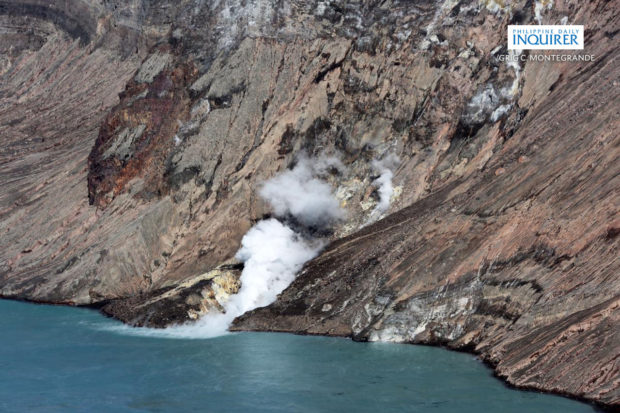MANILA, Philippines — High levels of sulfur dioxide emission are still being observed from the main crater of the Taal Volcano, the Philippine Institute of Volcanology and Seismology (Phivolcs) said Monday.
Phivolcs said in its 8 am bulletin that the “activity at the main crater was dominated by upwelling of hot volcanic fluids in its lake which generated plumes 1000 meters tall that drifted to the northwest and northeast.”
According to Phivolcs, sulfur dioxide (SO2) emission at the volcano averaged 4,443 tonnes on Sunday.
Phivolcs Director Renato Solidum confirmed to INQUIRER.net in a text message that this level of emission is still considered high.
In an advisory on Saturday, Phivolcs said it has observed high levels of SO2 gas emissions from Taal’s main crater. It said the highest SO2 flux ever recorded for Taal averaged 9,911 tonnes on June 10.
Phivolcs noted in its Monday bulletin that the Taal Volcano Island (TVI) started to deflate in April this year while the Taal region continues to undergo “very slow extension” since 2020.
“These parameters indicate overall that magmatic unrest continues to occur at shallow depths beneath the edifice,” it added.
Alert Level 2 is still in effect over Taal Volcano.
Phivolcs said that under Alert Level 2, sudden steam or gas-driven explosions, volcanic earthquakes, minor ash fall, and lethal accumulations or expulsions of volcanic gas can occur and threaten areas within and around TVI.
